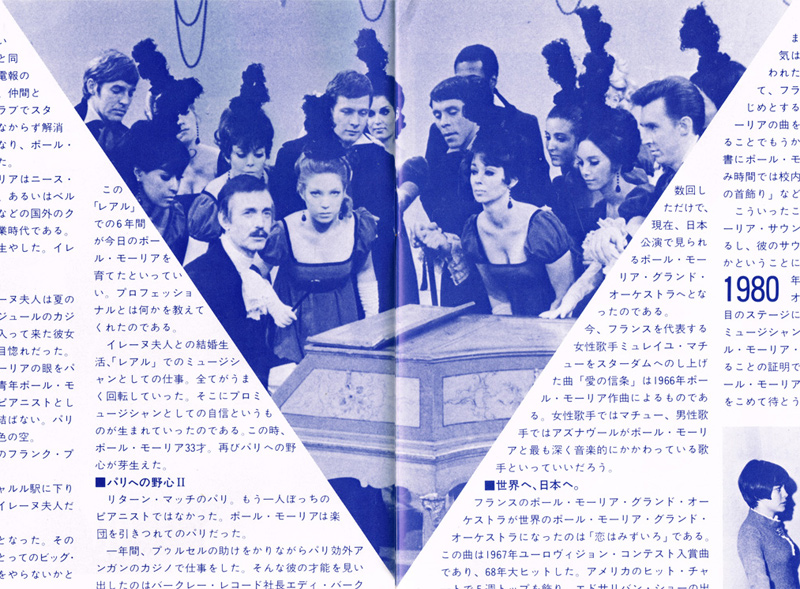The Paul Mauriat Story
There are 3 pages on this section that starts revealing some information about Paul Mauriat 's life.
=
Page 01 - Page 02 -
Page 03 =
Against his will, Paul Mauriat worked as a telephone telegraph operator at the Marseille Central Post Office, just like his father. His frustration with music was relieved, in no small part, by forming a group of friends at night to play standard jazz in a student clap. By 1951, Paul Mauriat was touring clubs in Nice, Cannes, and Paris, as well as abroad in Belgium, Italy, Holland, and Egypt. This was Paul Mauriat's apprenticeship period. It was during this period that he grew his trademark mustache. It was also during this period that he met his wife, Irene.
Ambition for Paris I
Madame Irene, a teacher in Algeria, was returning home for a summer vacation. Paul Mauriat was playing at a casino on the Côte d'Azur, and as soon as he saw her enter, he had a divine revelation. It was love at first sight. His love affair with Madame Irène turned Paul Mauriat's attention to Paris. With musical ambitions, the young Paul Mauriat went to Paris. With no connections, he worked as a pianist. However, the young man's ambition did not bear fruit. There was no Mediterranean sun in Paris, only gray skies. But there was one thing that did come of it. He met a fellow countryman, Franck Pourcel. When Paul Maurier got off at the Marseille-Saint-Charles train station, he found Madame Irène waiting for him. Marriage. This marriage marked a turning point for Paul Maurya. He received an invitation to join the orchestra from the “Real,” the pig stage for Marseille musicians of that era.
It is fair to say that these six years at “Real” nurtured the Paul Mauriat of today. His marriage to his wife Irene, who taught him what it means to be a professional, and his work as a musician at “Real”. Everything turned out well. Everything turned out well, and he gained confidence as a professional musician.
At this time, Paul Mauriat was 33 years old. Once again, his ambition to go to Paris grew.

Ambition for Paris II
Return Match Paris. He was no longer a lone pianist. Paul Mauriat was in Paris with his orchestra. For a year, with the help of Pourcel, he worked in a casino in Angang, outside Paris. It was Eddie Barclay, president of Berkeley Records, who discovered his talent. He stopped working at Clape and started working for Barclay Records as an arranger and conductor. He worked with veteran chanson singers such as Gloria Lasso, Dalida, and Henri Salvatore. In 1960, he was asked to conduct the orchestra at Aznavour's "Alhambra" theater. In 1965, when his contract with Berkeley Records expired, he signed a recording contract with Philips to record only the performances of Paul Mauriat's orchestra. Since then, the Paul Mauriat Grand Orchestra has performed only a few times with Aznavour and Mireille Mathieu, and has now become the Paul Mauriat Grand Orchestra that can be seen on tour in Japan. The song that launched Mireille Mathieu, one of France's most famous female singers, to stardom, "Mon Credo" was composed by Paul Mauriat in 1966.
Mathieu is the female singer and Aznavour is the male singer most closely associated musically with Paul Mauriat.